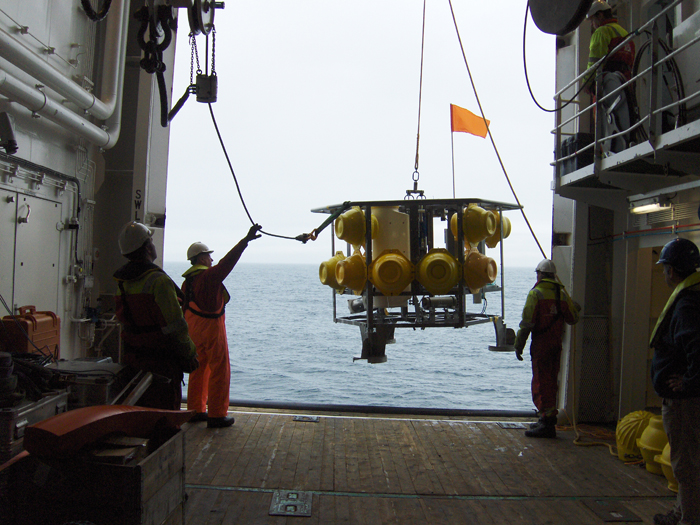Oceanographic setting and short-timescale environmental variability at an Arctic seamount sponge ground
E.M. Roberts, F. Mienis, H.T. Rapp, U. Hanz, H.K. Meyer, A.J. Davies (Roberts is a Post-doc, and Meyer an MSc student with Davies)
Mass occurrences of large sponges, or ‘sponge grounds’, are found globally in a range of oceanographic settings. Interest in these grounds is growing because of their ecological importance as hotspots of biodiversity, their role in biogeochemical cycling and bentho-pelagic coupling, the biotechnological potential of their constituent sponges, and their perceived vulnerability to physical disturbance and environmental change. Little is known about the environmental conditions required for sponges to persist and for grounds to form, and very few studies have explicitly characterised and interpreted the importance of oceanographic conditions. Here, results are presented of the first observational oceanographic campaign at a known sponge ground on the Schultz Massif Seamount (SMS; Arctic Mid-Ocean Ridge, Greenland / Norwegian Seas). The campaign consisted of water column profiling and short-term deployment of a benthic lander. It was supported by multibeam echosounder bathymetry and remotely operated vehicle video surveys. The seamount summit hosted several environmental factors potentially beneficial to sponges. It occurred within relatively nutrient-rich waters and was regularly flushed from above with slightly warmer, oxygen-enriched Norwegian Arctic Intermediate Water. It was exposed to elevated suspended particulate matter levels and oscillating currents (with diurnal tidal frequency) likely to enhance food supply and prevent smothering of the sponges by sedimentation. Elevated chlorophyll a concentration was observed in lenses above the summit, which may indicate particle retention by seamount-scale circulation patterns. High sponge density and diversity observed on the summit is likely explained by the combination of several beneficial factors, the coincidence of which at the summit arises from interaction between seamount geomorphology, hydrodynamic regime, and water column structure. Neighbouring seamounts along the mid-ocean ridge are likely to present similarly complex oceanographic settings and, as with the SMS, associated sponge ground ecosystems may therefore be sensitive to changes over a particularly broad range of abiotic factors.
Full Citation
E.M. Roberts, F. Mienis, H.T. Rapp, U. Hanz, H.K. Meyer and A.J. Davies (2018) Oceanographic setting and short-timescale environmental variability at an Arctic seamount sponge ground, Deep-Sea Research Part I 138, 98-113. https://doi.org/10.1016/j.dsr.2018.06.007
Authors Accepted Manuscript
Download the Authors Accepted Manuscript here.
Publisher Version
See here.

